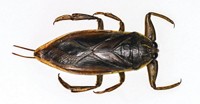Advertisement
Grab your lab coat. Let's get started
Welcome!
Welcome!
Create an account below to get 6 C&EN articles per month, receive newsletters and more - all free.
It seems this is your first time logging in online. Please enter the following information to continue.
As an ACS member you automatically get access to this site. All we need is few more details to create your reading experience.
Not you? Sign in with a different account.
Not you? Sign in with a different account.
ERROR 1
ERROR 1
ERROR 2
ERROR 2
ERROR 2
ERROR 2
ERROR 2
Password and Confirm password must match.
If you have an ACS member number, please enter it here so we can link this account to your membership. (optional)
ERROR 2
ACS values your privacy. By submitting your information, you are gaining access to C&EN and subscribing to our weekly newsletter. We use the information you provide to make your reading experience better, and we will never sell your data to third party members.
Analytical Chemistry
Newscripts
Jealous Dogs, Gregarious Dinos, Banished Prairie Dogs
by Alexander H. Tullo
August 11, 2014
| A version of this story appeared in
Volume 92, Issue 32

Dogs get jealous. This should seem obvious to anyone who has spent more than a few minutes with a dog. But as a pair of researchers recently noted, “Experimental evidence demonstrating behavioral indices of jealousy in dogs does not exist.”
To collect scientific evidence of dog jealousy, the University of California, San Diego, researchers recruited 36 dog owners and had them tease their pooches under controlled conditions (PLOS One 2014, DOI: 10.1371/journal.pone.0094597). The owners were given stuffed mechanical dogs and told to interact with them as they would a regular pooch. The researchers also handed out plastic jack-o’-lanterns, which they instructed the owners to treat like a regular dog as well.
The real dogs were more likely to exhibit jealous behaviors such as pushing or whining while the owner was interacting with the stuffed toy than with the jack-o’-lantern. A quarter of the dogs took things as far as snapping at the objects, a curious result because the study excluded, for safety reasons, dogs with a reputation for aggression.
Furthermore, the dogs thought—or at least suspected—that the stuffed canines were real. Some 86% of them sniffed the toys’ “anal region,” as the study puts it.
What could be worse than having a hungry tyrannosaur chasing you? Three tyrannosaurs, all bearing down on your tail at the same time.

A study published by a team of Canadian and U.S. paleontologists, who analyzed dinosaur tracks recently found in British Columbia, paints such a picture (PLOS One 2014, DOI: 10.1371/journal.pone.0103613).
The tracks went undiscovered for more than 50 million years, until a local guide happened upon them in 2011. It was quite a find.
Individual tyrannosaur footprints are rare, and no one has ever found a full set of tracks. The newly discovered tracks, though, belong to not just one, but three tyrannosaurs. Because all the tracks are of similar depth and preserved in clay in the same way, the authors of the study concluded they were made by three tyrannosaurs moving together in the same direction.
The team was able to estimate the ages of the tyrannosaurs at approximately 25, 26, and 29 years old, which puts them comfortably in adulthood. And using a probable tyrannosaur height at the hip—2.30 to 2.87 meters—and the length of the stride indicated by the tracks, the scientists were able to determine that the dinosaurs were traveling at 6.4 to 8.5 km per hour, a leisurely stroll as far as tyrannosaurs go.
Like tyrannosaurs, prairie dogs are also sociable. Perhaps a little too much so. “Prairie dogs are increasingly rare and subject to bubonic plague,” says Jennifer Verdolin, a researcher with the National Evolutionary Synthesis Center in North Carolina.
Understanding the social networks they form, however, might help stem the spread of the Black Death among the affable rodents.
Amanda Traud, a Ph.D. candidate in biomathematics at North Carolina State University, analyzed data Verdolin collected from prairie dog colonies in Arizona (Ecol. Complex. 2014, DOI: 10.1016/j.ecocom.2014.06.003). The researchers focused on a behavior called “greet kissing,” in which prairie dogs lock teeth when they see each other. If the critters are from different social groups, the interaction typically ends in aggression.
Studying greet kissing pinpointed the prairie dogs, called bridge individuals, who more often than others scamper between social groups. The researchers suggest that conservationists might slow the plague down by relocating the bridge individuals.
Alex Tullo wrote this week’s column. Please send comments and suggestions to newscripts@acs.org.





Join the conversation
Contact the reporter
Submit a Letter to the Editor for publication
Engage with us on Twitter